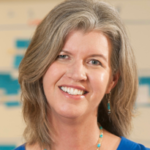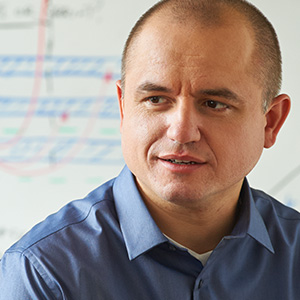SAFe CONTRIBUTORS
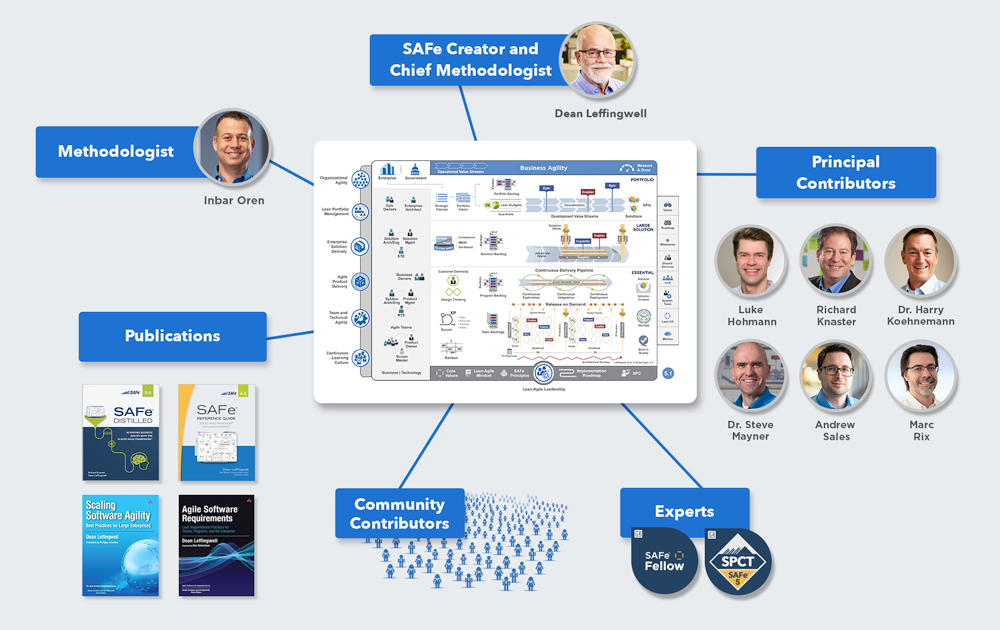
SAFe CREATOR AND CHIEF METHODOLOGIST
Dean Leffingwell
Recognized as one of the world’s foremost authorities on Lean-Agile best practices, Dean Leffingwell is an author, entrepreneur, and software development methodologist.
His two best-selling books, Agile Software Requirements: Lean Requirements Practices for Teams, Programs, and the Enterprise, and Scaling Software Agility: Best Practices for Large Enterprises, form much of the basis of modern thinking on Lean-Agile practices and principles. Founder of several successful startups, including Requisite, Inc., makers of RequisitePro (acquired by Rational), Mr. Leffingwell also served as Chief Methodologist to Rally Software, and prior to that, as a Sr. Vice President at Rational Software (now part of IBM). He currently serves as Chief Methodologist to Scaled Agile, Inc., which he co-founded in 2011.
SAFe CO-FOUNDER, FELLOW
Drew Jemilo
Drew is a principal contributor to the Scaled Agile Framework, consultant, and instructor. Drew met Dean Leffingwell in early 2009 when he was developing a scaled Agile methodology for a management consulting company to bridge their strategic business framework with Agile. Since then, they have worked together with global clients to synchronize distributed teams using the Agile Release Train in the US, Europe, and India.
SAFe METHODOLOGIST
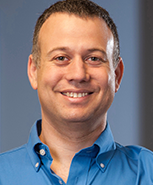 Inbar Oren
Inbar Oren
SAFe Methodologist, SAFe Fellow, and Principal Consultant
Inbar has more than 25 years of experience in the high-tech market. He joined Scaled Agile, Inc. in 2014 as a Principle Contributor to SAFe and is now a SAFe Methodologist where he contributes to all aspects of the Framework. For the last fifteen years, he has been helping development organizations—in both software and integrated systems—improve results by adopting Lean-Agile best practices. Clients include Intel, Elbit Systems, Cisco, Woolworths, Amdocs, and NCR.
PRINCIPAL CONTRIBUTORS
 Luke Hohmann
Luke Hohmann
Principal Contributor
Luke is a Principal Contributor to the Framework and the founder of Conteneo, (maker of Innovation Games®) which was acquired by Scaled Agile in 2019. The author of three books, Luke’s playfully diverse background of life experiences has uniquely prepared him to design and produce serious games to help professionals with strategic decision making. As a member of the Framework team, Luke is focused on Agile Product Delivery and is the product owner for the Agile Product and Solutions Management course. He is a regular presenter and keynote speaker at the SAFe Summit and Agile conferences around the world.
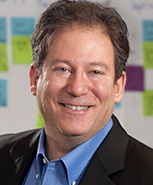 Richard Knaster
Richard Knaster
SAFe Fellow and Principal Contributor
Richard has over 30 years’ experience in software and systems development, in roles ranging from developer to executive. He has been leading large-scale Agile transformations for over 15 years. As a Principal Consultant, he is passionate about helping organizations create a better environment to deliver value, improve quality, flow, and being more engaging and fun. Richard is the co-author of SAFe® Distilled and the SAFe® Reference Guide and the product owner for the SAFe® Lean Portfolio Management course.
 Dr. Harry Koehnemann
Dr. Harry Koehnemann
SAFe Fellow and Principal Consultant
Harry focuses on the Enterprise Solution Delivery domain and software and systems engineering practices in SAFe. He spent 10 years as a software engineer and another 20 consulting with large-system builders in aerospace, defense, automotive, and others to improve their execution with product development lifecycle practices including Lean, Agile, MBSE, requirements management, quality management, and compliance activities. Harry is a regular presenter at Agile and systems engineering conferences.
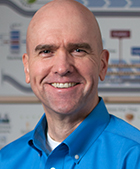 Dr. Steve Mayner
Dr. Steve Mayner
SAFe Fellow and Principal Consultant
Steve is the thought leader behind the SAFe® for Government course and guidance articles. Steve’s recent doctoral research combined with his experience as an executive has brought fresh innovation in patterns for successful leadership and organizational change to Scaled Agile and to SAFe. In addition to speaking at the SAFe Summits, he is a regular presenter at the DevOps Enterprise Summit, Agile Alliance conferences, and PMI events.
Andrew Sales
SAFe Fellow and Principal Consultant
Andrew has been supporting organizations with their Agile transformation for more than 10 years, drawing on his experiences from software development, project management, and product management. He previously led the Agile Services Practice across EMEA for CA Technologies (formerly Rally) and is a regular speaker at Agile conferences and contributor to the Agile community. As a member of the Framework team, he is focused on the Team and Technical Agility and Organizational Agility competencies. Currently, his postgraduate research includes exploring how organizational structure impacts the performance of the enterprise.
 Marc Rix
Marc Rix
SAFe Fellow and Principal Consultant
Marc specializes in the Essential SAFe, Team and Technical Agility, and Agile Product Delivery areas of the framework. He is a former Scaled Agile partner and customer with a long history of leading enterprises through complex Agile and DevOps transformations. His experience in Lean-Agile software delivery spans more than 20 years and has included roles in development, architecture, operations, senior management, consulting, and business development.
SAFe FELLOWS
The SAFe Fellow achievement is Scaled Agile’s most prestigious distinction, recognizing individuals who have exhibited the highest level of thought leadership and transformational expertise for implementing the Scaled Agile Framework. The SAFe Fellows program recognizes a select number of individuals with the depth and breadth of experience to work at the highest levels of complexity in enterprise transformation and strategy, and who have established themselves as thought leaders in Lean-Agile development. In addition, many have contributed—directly or indirectly—to core SAFe guidance and advanced topic articles. We are humbled and honored to work with these individuals to the benefit of all those who build and use the world’s most important systems.
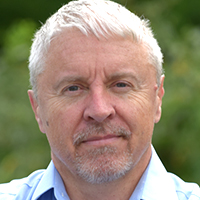 Michael Casey
Michael Casey
Agile Big Picture
Passionate about change and helping organizations create their competitive advantage
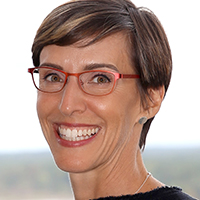
Cheryl Crupi
Elevate.to
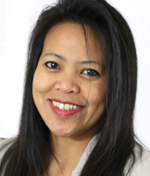
Charlene M Cuenca
Icon Agility Services
 Deema Dajani
Deema Dajani
Scaled Agile, Inc.
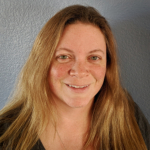 Rebecca Davis
Rebecca Davis
Scaled Agile, Inc.
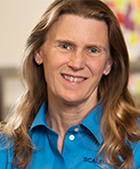 Jennifer Fawcett
Jennifer Fawcett
Scaled Agile, Inc.
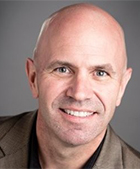 Ken France
Ken France
Cprime
Leads the Enterprise Agility Practice at Cprime and specializes in LPM and Leadership
 Scott Frost
Scott Frost
Accenture | Solutions IQ
Focusing on Enterprise Portfolio collaboration from strategy to cross-portfolio alignment
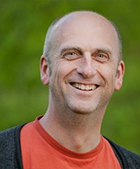 Dr. Thorsten Janning
Dr. Thorsten Janning
KEGON, AG
 Anand Murthy Raj
Anand Murthy Raj
Consultant, influencer , speaker, coach and passionate researcher in business story telling.
 Tamara Nation
Tamara Nation
Director of Product Management, Scaled Agile, Inc.
Development of SAFe RTE and LPM course content
 Inbar Oren
Inbar Oren
Scaled Agile, Inc.
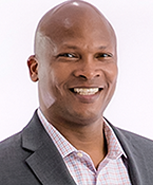 Timothy Porter
Timothy Porter
Founder & CEO, Appddiction Studio
DevOps course content contributor
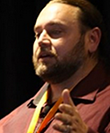 Mark Richards
Mark Richards
Agile Rising
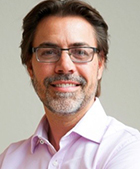 Marc Rix
Marc Rix
Scaled Agile, Inc.
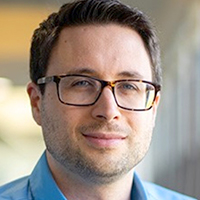
Andrew Sales
Scaled Agile, Inc.

Rami Sirkiä
Managing Director, Nitor Delta
Lean Budgeting course content and developed the Lean-Agile Financial Planning with SAFe advanced guidance article
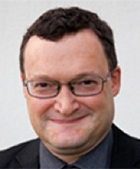 Ian Spence
Ian Spence
Ivar Jacobson International
 Carl Starendal
Carl Starendal
We Are Movement founder & senior advisor, RTE course contributor, focused on flow & leadership development
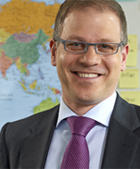 Michael Stump
Michael Stump
Gladwell Academy
Initiator of the SAFe Implementation Roadmap
 Brian Tucker
Brian Tucker
Ivar Jacobson International
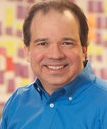 Joe Vallone
Joe Vallone
Scaled Agile, Inc.
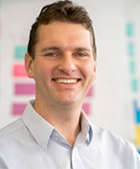 Eric Willeke
Eric Willeke
Elevate.to
Extensive contributions to LPM, Architecture, and multi-portfolio.
SAFe 4.5/5.0 Principal Contributor
 Darren Wilmshurst
Darren Wilmshurst
cPrime
Author and Founder of London SAFe Meet-up
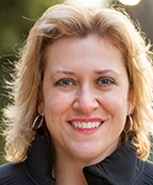 Adrienne Wilson
Adrienne Wilson
Chief Operations Officer, Pretty Agile
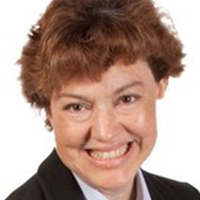
Robin Yemen
Project & Team
SAFe COMMUNITY CONTRIBUTORS

Peter Vollmer, SPCT
 Cindy VanEpps, SPCT
Cindy VanEpps, SPCT
Advanced Topic article: Hardware Teams in SAFe
LinkedIn
 Jon Feld, COO of The Feld Group
Jon Feld, COO of The Feld Group
SAFe® White Paper
Eliminating the Blind Spot: A Proven Approach to Enterprise Technology Strategy Formulation
feldgroupinstitute.com
 Ken Pugh
Ken Pugh
Agile Software Engineering courseware plus collaboration on team-level competency, testing, and quality articles.
Kenpugh.com
 Isaac Montgomery, SPC
Isaac Montgomery, SPC
Toolkits and Lean Portfolio Management
LinkedIn
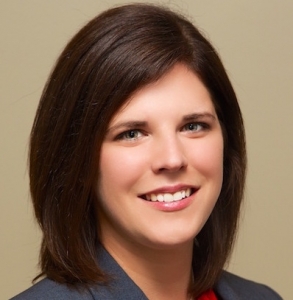 Natalie Warnert, SPC
Natalie Warnert, SPC
Guidance article: Lean UX and the SAFe Program Increment Life Cycle
LinkedIn
 Lori Priller, SPC
Lori Priller, SPC
Guidance article: An HR Playbook for a Successful SAFe Implementation
LinkedIn
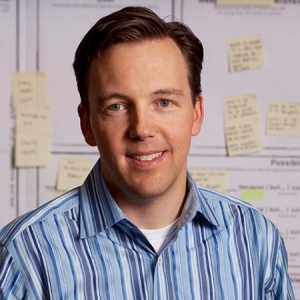 Zach Nies
Zach Nies
Collaboration in the SAFe Lean Budget Guardrails article
LinkedIn
 Fabiola Eyholzer, SPC
Fabiola Eyholzer, SPC
Guidance article: Agile HR with SAFe: Bringing Lean-Agile People Operations into the 21st Century
justleadingsolutions.com
 Yuval Yeret
Yuval Yeret
Guidance article: Invitation-based SAFe implementation
agilesparks.com
 David Zhao
David Zhao
Translated versions of the SAFe 4.5 white paper and SAFe 4.5 Glossary from English to Chinese
LinkedIn
 Joseph Barjis, PhD
Joseph Barjis, PhD
PI Planning Essence Illustrated with “Why”
LinkedIn
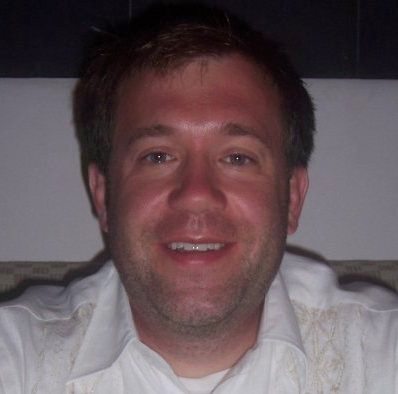 Scott Prugh, SPC
Scott Prugh, SPC
Guidance article: Continuous Delivery
csgi.com
 Gillian Clark, SPCT
Gillian Clark, SPCT
Guidance: Lean Software Development in SAFe
Elevate.to
 Gareth Evans, SPCT
Gareth Evans, SPCT
Guidance: Lean Software Development in SAFe
Elevate.to
 Juha-Markus Aalto
Juha-Markus Aalto
Applying SAFe in the smaller enterprise
LinkedIn
The Scaled Agile Framework has been proven to deliver substantial business benefits in a large number of software and systems enterprises. We admire these companies for the courage to innovate, and we are indebted to them for the feedback they have provided. Specifically, we’d like to thank the many companies in our Customer Stories, each of whom has adopted the Framework and many of whom have provided specific input to help it evolve.
ADDITIONAL ACKNOWLEDGMENTS
The contributors to Agile Software Requirements
Initial concepts behind the Framework were first documented in Scaling Software Agility, but the Framework per se was first documented in Agile Software Requirements: Lean Requirements for Teams, Programs, and the Enterprise (ASR), so it’s appropriate to repeat and update the book acknowledgments here. Thanks to the ASR reviewers, Gabor Gunyho, Robert Bogetti, Sarah Edrie, and Brad Jackson. Don Reinertsen provided permission to use elements of Principles of Product Development Flow. Thanks to my Finnish collaborators Juha-Markus Aalto, Maarit Laanti, Santeri Kangas, Gabor Gunyho, and Kuan Eeik Tan. Alistair Cockburn, Don Widrig, Mauricio Zamora, Pete Behrens, Jennifer Fawcett, and Alexander Yakyma contributed directly to book content. Even that list is not exhaustive; many others—Mike Cottmeyer, Ryan Shriver, Drew Jemilo, Chad Holdorf, Keith Black, John Bartholomew, Chris Chapman, Mike Cohn, Ryan Martens, Matthew Balchin, and Richard Lawrence—contributed words, thoughts, or encouragement.
A special acknowledgment to the Agile thought leaders
Of course, SAFe stands on the shoulders of many who came before us, particularly the Agile thought leaders who created the industry movement. It starts with the signers of the Agile Manifesto and continues with those outspoken thought leaders who have helped move the industry toward the new paradigm. The following have contributed most directly to our understanding of Agile development: Kent Beck, Alistair Cockburn, Ron Jeffries, Mike Cohn, David Anderson, Jeff Sutherland, Martin Fowler, Craig Larman, Ken Schwaber, Scott Ambler, and Mary and Tom Poppendieck. Still others are acknowledged in the bibliography below.
A special acknowledgment to the Lean leaders
A special acknowledgment to the Lean leaders In extending Agile to the enterprise and developing the broader Lean-Agile and DevOps movements. We are also fortunate to stand on the shoulders of Lean thought leaders as well, including Don Reinertsen, Jeffrey Liker, Gene Kim, Jez Humble, Eli Goldratt, Eric Ries, Jeff Gothelf, Josh Seiden, Henrik Kniberg, Dr. Alan Ward, Jim Sutton, Michael Kennedy, Dantar Oosterwal, Steve Womack, and Daniel Jones.

And to Edwards Deming
Finally, where would we be without the seminal works of W. Edwards Deming, to whom we perhaps owe the deepest gratitude of all? He was a visionary, whose tireless quest for the truth and unwavering belief in continual improvement led to a set of transformational theories and teachings that changed the way we think about quality, management, and leadership. The impact of his revolutionary ideas has been compared to those of Copernicus, Darwin, and Freud. Others have referred to him as the father of the third phase of the Industrial Revolution.
LEARN MORE about Edwards Deming at The Deming Institute.
BIBLIOGRAPHY
SAFe is based on our own work, the work of the contributors and SPCs worldwide, and an incredible body of knowledge about Agile, Lean Thinking, Lean product development, systems thinking, organizational change management, human potential, business strategy, management philosophy, and more. Each of the books and articles in the bibliography below have contributed materially to the authors’ perspectives and are integral to what makes SAFe ‘safe.’
- “Agile Architecture: Strategies for Scaling Agile Development.” Scott Ambler. Agile Modeling, 2012. http://agilemodeling.com/essays/agileArchitecture.htm.
- The Agile Architecture Revolution: How Cloud Computing, REST-Based SOA, and Mobile Computing Are Changing Enterprise IT. Jason Bloomberg. Wiley, 2013.
- Agile Business: A Leader’s Guide to Harnessing Complexity. Bob Gower and Rally Software. Rally Software (Telemachus Press), 2013.
- Agile Coaching. Rachel Davies and Liz Sedley. Pragmatic Bookshelf, 2009.
- Agile Contracts: Blast Off to a Zone of Collaborative Systems Building. Drew Jemilo. Agile 2015.
- Agile Estimating and Planning. Mike Cohn. Prentice Hall, 2005.
- “Agile in a Hardware/Firmware Environment: Draw the Cost of Change Curve.” Ken Rubin. http://www.innolution.com/blog/agile-in-a-hardware-firmware-environment-draw-the-cost-of-change-curve.
- Agile Portfolio Management. Jochen Krebs. Microsoft Press, 2008.
- Agile Project Management: Creating Innovative Products. Jim Highsmith. Addison-Wesley, 2009.
- Agile Project Management with Scrum. Ken Schwaber. Developer Best Practices, 2004.
- Agile Retrospectives: Making Good Teams Great. Esther Derby and Diana Larsen. Pragmatic Bookshelf, 2006.
- Agile Software Development: The Cooperative Game. Alistair Cockburn. Addison-Wesley, 2006.
- Agile Software Development in the Large: Diving into the Deep. Jutta Eckstein. Dorset House, 2004.
- Agile Software Development with Scrum. Ken Schwaber and Mike Beedle. Pearson, 2001.
- Agile Software Requirements: Lean Requirements Practices for Teams, Programs, and the Enterprise. Dean Leffingwell. Addison-Wesley, 2011.
- Agile Testing: A Practical Guide for Testers and Agile Teams. Lisa Crispin and Janet Gregory. Addison-Wesley, 2009.
- The Art Of Business Value. Mark Schwartz. IT Revolution, 2016.
- Balancing Agility and Discipline: A Guide for the Perplexed. Barry Boehm and Richard Turner. Addison-Wesley/Pearson Education, 2003.
- Beyond Entrepreneurship: Turning Your Business into an Enduring Great Company. James C. Collins and William C. Lazier. Prentice Hall Press, 1995.
- The Birth of Lean. Koichi Shimokawa and Takahiro Fujimoto (eds.). Lean Enterprise Institute, 2009.
- “Building Deep Supplier Relationships.” Jeffrey Liker and Thomas Y. Choi. Harvard Business Review. December 2004.
- “Business trend: ‘E-shaped’ People, Not ‘T-shaped.'” Sarah Davanzo. http://culturecartography.wordpress.com/2012/07/26/business-trend-e-shaped-people-not-t-shaped.
- Change by Design: How Design Thinking Transforms Organizations and Inspires Innovation. Tim Brown. Harper Business, 2009.
- Clean Code: A Handbook of Agile Software Craftsmanship. Robert C. Martin. Prentice Hall, 2008.
- Coaching Agile Teams: A Companion for ScrumMasters, Agile Coaches, and Project Managers in Transition. Lyssa Adkins. Addison-Wesley, 2010.
- Collaboration Explained: Facilitation Skills for Software Project Leaders. Jean Tabaka. Addison-Wesley, 2006.
- Continuous Delivery: Reliable Software Releases Through Build, Test, and Deployment Automation. Jez Humble and David Farley. Addison-Wesley, 2010.
- Continuous Integration: Improving Software Quality and Reducing Risk. Paul M. Duvall, Steve Matyas, and Andrew Glover. Addison-Wesley, 2007.
- Crossing the Chasm. Geoffrey Moore. Harper Business Essentials, 1991, 2014.
- Crystal Clear: A Human-Powered Methodology for Small Teams. Alistair Cockburn. Addison-Wesley, 2004.
- The Culture Engine: A Framework for Driving Results, Inspiring Your Employees, and Transforming Your Workplace. S. Chris Edmonds. Wiley, 2014.
- The DevOps Handbook: How to Create World-Class Agility, Reliability, and Security in Technology Organizations. Jez Humble, Patrick Debois, and John Willis. IT Revolution Press, 2016.
- Disciplined Agile Delivery: A Practitioner’s Guide to Agile Software Delivery in the Enterprise. Scott W. Ambler and Mark Lines. IBM Press, 2012.
- Domain-Driven Design: Tackling Complexity in the Heart of Software. Eric Evans. Addison-Wesley, 2003.
- Drive: The Surprising Truth About What Motivates Us. Daniel H. Pink. Riverhead Hardcover, 2009.
- Emergent Design: The Evolutionary Nature of Professional Software Development. Scott Bain. Addison-Wesley, 2008.
- The Enterprise and Scrum. Ken Schwaber. Microsoft Press, 2007.
- Escape Velocity. Geoffrey Moore. Harper Business Essentials, 2011.
- The Essential Deming: Leadership Principles from the Father of Quality. Joyce Nilsson Orsini (ed.). McGraw-Hill Education, 2012.
- The Essential Drucker: The Best of Sixty Years of Peter Drucker’s Essential Writings on Management. Peter F. Drucker. HarperBusiness, 2008.
- Essential Scrum: A Practical Guide to the Most Popular Agile Process. Kenneth S. Rubin. Addison-Wesley, 2012.
- Essential Skills for the Agile Developer: A Guide to Better Programming and Design. Alan Shalloway, Scott Bain, Ken Pugh, and Amir Kolsky. Addison-Wesley, 2011.
- “Establishing an Agile Portfolio to Align IT Investments with Business Needs.” Joseph Thomas and Steven Baker, DTE Energy. http://www.jctnet.us/Professional/Agile/CD-ThomasBaker-EstablishAgilePortfolio-Paper.pdf.
- Extreme Programming Explained: Embrace Change. Kent Beck and Cynthia Andres. Addison-Wesley, 2004.
- Extreme Programming Installed. Ron Jeffries, Ann Anderson, and Chet Hendrickson. Addison-Wesley, 2000.
- The Fifth Discipline: The Art & Practice of The Learning Organization. Peter M. Senge. Doubleday, 2006.
- The Five Dysfunctions of a Team: A Leadership Fable. Patrick M. Lencioni. Jossey-Bass, 2002.
- “Fixing Scheduling with Agile at the VA.” Jason Bloomberg. Forbes. October 23, 2014.
- The Goal: A Process of Ongoing Improvement. Eliyahu M. Goldratt. North River Press, 2014.
- Hitotsubashi on Knowledge Management. Hirotaka Takeuchi and Ikujiro Nonaka. Wiley, 2004.
- Impact Mapping: Making a Big Impact with Software Products and Projects. Gojko Adzic. Provoking Thoughts, 2012.
- Implementing Lean Software Development: From Concept to Cash. Mary Poppendieck and Tom Poppendieck. Addison-Wesley, 2006.
- The Innovator’s Dilemma: When New Technologies Cause Great Firms to Fail. Clayton M. Christensen. Harvard Business Review Press, 2013.
- Inside the Tornado. Geoffrey Moore. Harper Business Essentials, 1995, 2004.
- Kanban: Successful Evolutionary Change for Your Technology Business. David J. Anderson. Blue Hole Press, 2010.
- The Knowledge-Creating Company: How Japanese Companies Create the Dynamics of Innovation. Ikujiro Nonaka and Hirotaka Takeuchi. Oxford University Press, 1995.
- Landmarks of Tomorrow. Peter Drucker. Harper & Brothers, 1959.
- Leading Change. John P. Kotter. Harvard Business Review Press, 2012.
- Lean-Agile Acceptance Test-Driven Development: Better Software Through Collaboration. Ken Pugh. Addison-Wesley, 2011.
- Lean-Agile Software Development: Achieving Enterprise Agility. Alan Shalloway, Guy Beaver, and James R. Trott. Addison-Wesley, 2009.
- Lean Architecture: for Agile Software Development. James Coplien and Gertrud Bjørnvig. Wiley, 2010.
- Lean Enterprise: How High Performance Organizations Innovate at Scale. Jezz Humble et al. O’Reilly Media, 2015.
- Lean from the Trenches: Managing Large-Scale Projects with Kanban. Henrik Kniberg. Pragmatic Bookshelf, 2011.
- The Lean Machine: How Harley-Davidson Drove Top-Line Growth and Profitability with Revolutionary Lean Product Development. Dantar P. Oosterwal. AMACOM, 2010.
- Lean Product and Process Development. Allen C. Ward and Durward K. Sobek II. Lean Enterprise Institute, 2014.
- Lean Software Development: An Agile Toolkit. Mary Poppendieck and Tom Poppendieck. Addison-Wesley, 2003.
- Lean Software Strategies: Proven Techniques for Managers and Developers. Peter Middleton and James Sutton. Productivity Press, 2005.
- The Lean Startup: How Today’s Entrepreneurs Use Continuous Innovation to Create Radically Successful Businesses. Eric Ries. Crown Business, 2011.
- Lean Thinking: Banish Waste and Create Wealth in Your Corporation. James P. Womack and Daniel T. Jones. Productivity Press, 2003.
- The Lean Turnaround: How Business Leaders Use Lean Principles to Create Value and Transform Their Company. Art Byrne and James P. Womack. McGraw-Hill Education, 2012.
- Lean UX: Designing Great Products with Agile Teams. Jeff Gothelf and Josh Seiden. O’Reilly Media, 2016
- The Machine That Changed the World: The Story of Lean Production—Toyota’s Secret Weapon in the Global Car Wars That Is Revolutionizing World Industry. James P. Womack, Daniel T. Jones, and Daniel Roos. Free Press, 2007.
- Management 3.0: Leading Agile Developers, Developing Agile Leaders. Jurgen Appelo. Addison-Wesley, 2011.
- Managing the Design Factory: A Product Developer’s Toolkit. Donald G. Reinertsen. Free Press, 1997.
- Managing for Excellence: The Guide to Developing High Performance in Contemporary Organizations. David L. Bradford and Allan R. Cohen. Wiley, 1997.
- Managing Software Requirements: A Use Case Approach (second edition). Dean Leffingwell and Don Widrig. Addison-Wesley, 2003.
- Manifesto for Agile Software Development. http://agilemanifesto.org/.
- The Mythical Man-Month. Frederick P. Brooks, Jr. Addison-Wesley, 1995.
- The New Economics for Industry, Government, Education. W. Edwards Deming. The MIT Press, 2000.
- “New, Improved Keiretsu.” Katsuki Aoki and Thomas Taro Lennerfors. Harvard Business Review. September 2013.
- “The New New Product Development Game.” Hirotaka Takeuchi and Ikujiro Nonaka. Harvard Business Review, January 01, 1986.
- Out of the Crisis. W. Edwards Deming. MIT Center for Advanced Educational Services, 1982.
- The Phoenix Project: A Novel About IT, DevOps, and Helping Your Business Win. Gene Kim, Kevin Behr, and George Spafford. IT Revolution Press, 2013.
- Planning Extreme Programming. Kent Beck and Martin Fowler. Addison-Wesley, 2001.
- The Power of Alignment: How Great Companies Stay Centered and Accomplish Extraordinary Things. George H. Labovitz and Victor Rosansky. Wiley, 1997.
- Practices for Scaling Lean & Agile Development: Large, Multisite, and Offshore Product Development with Large-Scale Scrum. Craig Larman and Bas Vodde. Addison-Wesley, 2010.
- The Principles of Product Development Flow: Second Generation Lean Product Development. Donald G. Reinertsen. Celeritas Publishing, 2009.
- Product Development for the Lean Enterprise: Why Toyota’s System Is Four Times More Productive and How You Can Implement It. Michael N. Kennedy. CreateSpace Independent Publishing Platform, 2003.
- Reengineering the Corporation: A Manifesto for Business Revolution. Michael Hammer and James Champy. HarperBusiness, 2006.
- “Refactoring.” Martin Fowler. www.refactoring.com.
- Refactoring: Improving the Design of Existing Code. Martin Fowler et al. Addison-Wesley, 1999.
- Refactoring Workbook. William Wake. Addison-Wesley, 2003.
- Reinventing Organizations. Frederick Laloux. Nelson Parker, 2014.
- Running Lean: Iterate from Plan A to a Plan That Works. Ash Maurya. O’Reilly Media, 2012.
- “Scaling Agility @ Spotify with Tribes, Squads, Chapters, and Guilds.” Henrik Kniberg and Anders Ivarsson. October 2012.
- Scaling Lean & Agile Development: Thinking and Organizational Tools for Large-Scale Scrum. Craig Larman and Bas Vodde. Addison-Wesley, 2008.
- Scaling Software Agility: Best Practices for Large Enterprises. Dean Leffingwell. Addison-Wesley, 2007.
- Scrum and XP from the Trenches. Henrik Kniberg. lulu.com, 2015.
- Scrumban: Essays on Kanban Systems for Lean Software Development. Corey Ladas. Modus Cooperandi Press, 2009.
- Scrum Guides. Jeff Sutherland and Ken Schwaber. scrumguides.org.
- Servant-Leadership Across Cultures: Harnessing the Strengths of the World’s Most Powerful Management Philosophy. Fons Trompenaars and Ed Voerman. McGraw-Hill, 2009.
- “Shooting the Rapids: Managing Product Development in Turbulent Environments.” Marco Iansiti. California Management Review 38 (1995): 37 – 58.
- Software by Numbers: Low-Risk, High-Return Development. Mark Denne and Jane Cleland-Huang. Prentice Hall, 2003.
- The Software Project Manager’s Bridge to Agility. Michele Sliger and Stacia Broderick. Addison-Wesley, 2008.
- Succeeding with Agile: Software Development Using Scrum. Mike Cohn. Addison-Wesley, 2009.
- Switch. How to Change Things When Change Is Hard. Chip Heath and Dan Heath, Broadway Books, 2010.
- Team of Teams: New Rules of Engagement for a Complex World. Stanley McChrystal, et al. Portfolio, 2015.
- Test-Driven Development: By Example. Kent Beck. Addison-Wesley, 2002.
- Test Driven: TDD and Acceptance TDD for Java Developers. Lasse Koskela. Manning Publications, 2007.
- The Tipping Point: How Little Things Can Make a Big Difference. Malcolm Gladwell. Little, Brown and Company, 2000.
- Toyota Global. http://www.toyota-global.com/sustainability/society/partners/supplier_csr_en.pdf.
- Toyota Kata: Managing People for Improvement, Adaptiveness and Superior Results. Mike Rother. McGraw-Hill Education, 2009.
- The Toyota Way: 14 Management Principles from the World’s Greatest Manufacturer. Jeffrey K. Liker. McGraw-Hill Education, 2004.
- The Toyota Way to Lean Leadership: Achieving and Sustaining Excellence Through Leadership Development. Jeffrey Liker and Gary L. Convis. McGraw-Hill, 2011.
- Tribal Unity: Getting from Teams to Tribes by Creating a One Team Culture. Em Campbell-Pretty. SpiritCast Network, 2016.
- User Stories Applied: For Agile Software Development. Mike Cohn. Addison-Wesley, 2004.
- User Story Mapping: Discover the Whole Story, Build the Right Product. Jeff Patton and Peter Economy. O’Reilly Media, 2014.
- “Using Both Incremental and Iterative Development.” Alistair Cockburn. STSC CrossTalk 21 (2008): 27 – 30.
- Value Stream Mapping: How to Visualize Work and Align Leadership for Organizational Transformation. Karen Martin and Mike Osterling. McGraw-Hill Education, 2013.
- “What Is Systems Engineering?” International Council on Systems Engineering. http://www.incose.org/AboutSE/WhatIsSE.
- The Wisdom of Crowds. James Surowiecki. Anchor, 2005.
- Work Redesign. Richard Hackman and Greg Oldham. Prentice Hall, 1980.
Last update: 17 August, 2021


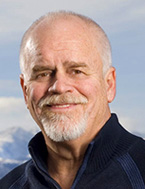
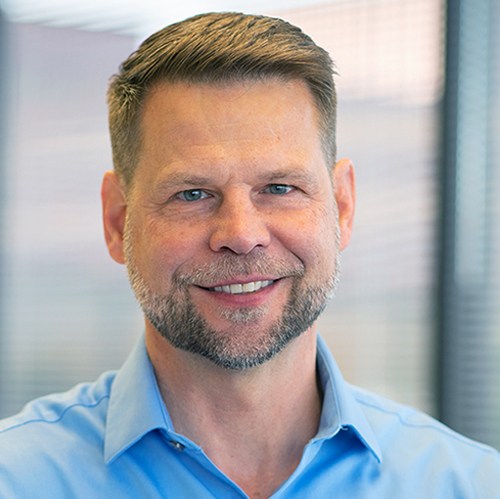
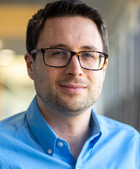

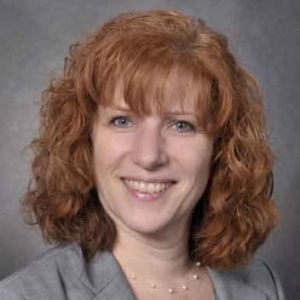
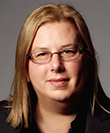

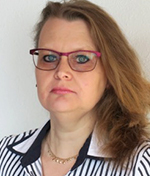
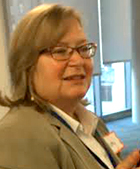
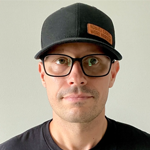
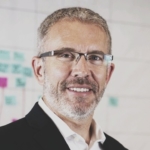
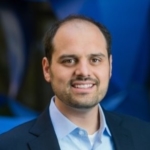

 Joseph Montalbano, SPC
Joseph Montalbano, SPC
